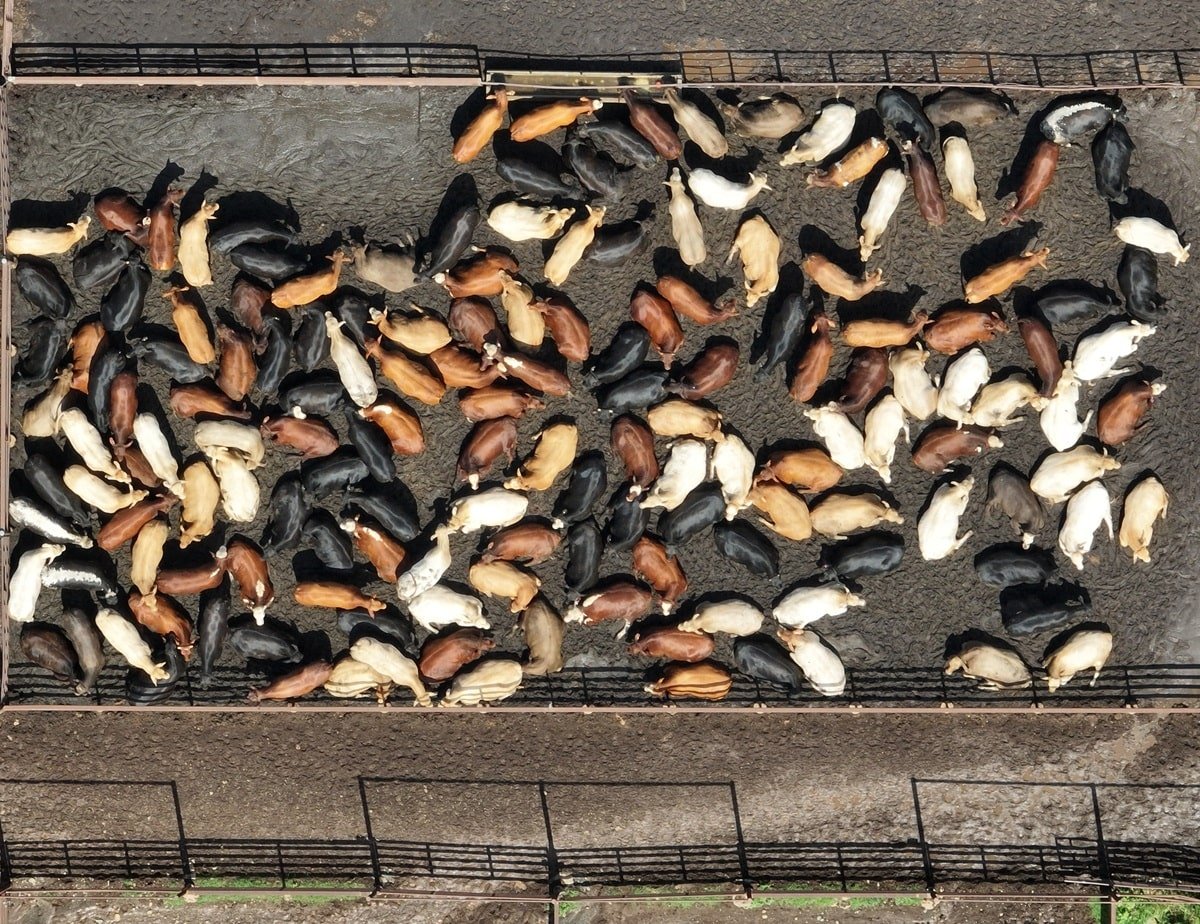Cattle Feedlots: Australia’s Hidden Factory Farms
Our 2025 report found that most consumers are unaware of the fact that an overwhelming majority of this beef originates from cattle feedlots, which are rife with animal welfare issues.

Image credit: AnimalKIND / World Animal Protection
Many Aussies assume their beef comes from green paddocks. But our latest investigation reveals a very different reality.
Our research shows McDonald's sources some of its beef from intensive Australian feedlots as part of its supply chain – including those run by global meat giant JBS. On JBS feedlots reportedly linked to McDonald’s, World Animal Protection has seen cows lying for hours in thick mud, their own waste, and waste from other cows too.
Our recent investigation shows that intensive Aussie feedlots are rife with welfare issues. This is one of Australia’s worst animal welfare crises that most people have never heard of – and it is being perpetuated by companies like McDonald’s who source some of their beef products from feedlots.
According to industry sources, Australian beef is supplied to approximately 65-70% of McDonald's stores worldwide. With evidence showing McDonald's sources some of its beef from Australian feedlots as part of its supply chain, consumers around the world may be eating burgers that contain meat from cattle exposed to extreme heat, unsanitary conditions, and disease outbreaks.
You have the power to hold them to account. Please urgently join us in sending McDonald’s a strong and clear message to eliminate feedlot beef from their supply chain. Because Aussie cows deserve better than this.
Then, Angus was ripped away from everything he knew. Loaded onto a crowded truck, he endured a gruelling journey to an intensive feedlot. There, he didn’t get to lie in the grass or be with his herd. Instead, he became cow #1547 and was forced to live in a filthy, barren pen with little protection from the sun.

No longer eating fresh grass, Angus was fed a grain-based diet, which is unnatural for cows. It can cause serious medical complications, like bloat and grain poisoning which left untreated, can lead to an excruciating death.
Day after day, Angus was confined in a waste-filled yard, suffering through extreme cold, extreme heat and nowhere to seek shelter. Unable to even lay down in a clean place, or socialise with his former herd, Angus would have felt every moment of fear and confusion during his life on the feedlot before he was slaughtered for his meat. Angus was curious, social and smart.
He deserved a life worth living. Not this 💩. Will you help?
Disclaimer: Angus is a persona, but his story reflects the real experience of millions of Australian cows forced to live in feedlots every year. These visuals are from feedlot facilities owned by JBS here in Australia.
Every year, JBS feedlots confine tens of thousands of cattle in barren yards, exposing them to extreme heat, filthy conditions and disease outbreaks. Evidence shows McDonald's sources some of its beef from feedlots as part of its supply chain.
In a shocking revelation, industry sources show Australian beef is supplied to approximately 65-70% of McDonald's stores around the world.
Right now, consumers across the globe may be eating burgers made from cows who came from Australian feedlots – a place where cows are exposed to extreme heat, unsanitary conditions and disease outbreaks.
As one of Australia’s major beef purchasers, McDonald’s has the power to stop buying feedlot beef, and improve animal welfare standards across their supply chain.

Feedlots are used in the beef industry to minimise costs and maximise profits – all at the expense of the cows involved.
Transition from pasture to feedlot is one of the most stressful experiences of a cow’s life. Young cows are taken from their home and put on crowded trucks for a long journey to the feedlot, where these sensitive, social animals then experience significant changes to their surroundings and their diet.
Feedlots are not legally required to provide cows with shade, bedding, or enrichment. They are barren, bleak and exposed to the harsh elements. Some cows experience such a diminished quality of life on feedlots that they die before they even get to the slaughterhouse.
JBS Australia operates large-scale feedlots across Australia confining tens of thousands of cattle in barren yards every year. Our research shows JBS Australia, who operates large-scale feedlots, is one of McDonald's beef suppliers.
Australian cows deserve better than to suffer through filth, disease and painful conditions.
Right now, McDonald’s has the power to stop using cows from feedlots in their beef patties.
Please join us in telling McDonald’s to go feedlot-free.
Disclaimer: information is based on publicly available sources including McDonald's own statements, industry publications, and government records.
Our 2025 report found that most consumers are unaware of the fact that an overwhelming majority of this beef originates from cattle feedlots, which are rife with animal welfare issues.
Right now, millions of Australian cows are being forced to live in filthy, barren pens called “feedlots” with little protection from the sun – all so they can be used for beef.
Disclaimer: Throughout this campaign we use the term “cows” to refer to cattle. We note that the beef industry often used a wider variety of specific terminology.